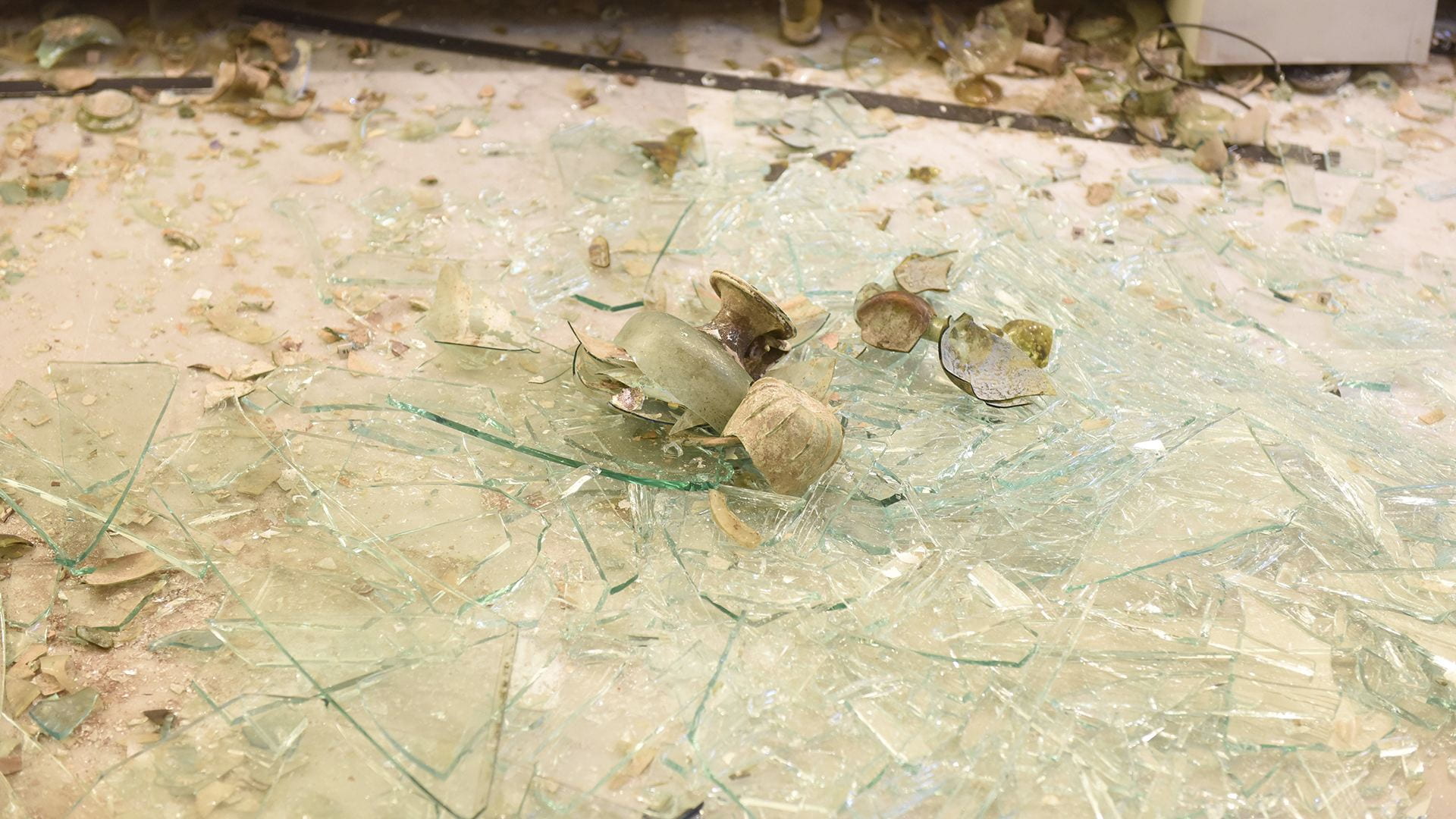
Features
A shattering blow to AUB’s Archaeological Museum
By MainGate Staff
Fall 2020/Winter 2021
On the morning following the August 4 Beirut explosion, Dr. Nadine Panayot braced for the worst as she entered Post Hall, home of AUB’s Archaeological Museum. Weeks before her September 1 appointment as the new museum director, Panayot was leading a volunteer team of her former students in museum studies and cultural heritage management to assist with blast destruction at two of eight damaged museums in Beirut: the AUB museum and the Sursock Museum. The morning presented an emotionally difficult assignment for someone who has dedicated her life to the preservation of some of the world’s most precious ancient artifacts, but the job could not have been in better hands.
As she entered the building, Panayot immediately saw that several windows were smashed and the huge 118-year-old door that opened onto the main exhibition space had been blown off its hinges. She was greatly relieved that the door had not crashed onto the magnificent Bronze Age and Phoenician terracotta figurines nearby but rather had fallen in the other direction, into an empty hallway. As she made her way inside, Panayot found rows of display cases with their precious contents seemingly intact, causing her to speculate that the timber may have borne the force of the shockwave. Then she arrived at the far end of the museum—the space that had been curated to tell the story of “Glass through the Ages.” Display cases showed Phoenician, Roman, and Islamic manufacturing techniques, and everyday and ornamental uses of ancient glass. The centerpiece was a two-meter-wide cabinet of five shelves that showcased 74 exquisite examples of domestic glass—lamps, vases, bowls, and drinking vessels.
Phoenician Gallery Case #2 lay face down on the marble floor, surrounded by a carpet of ancient polychrome smithereens mixed with the smashed glass shelves of the display case. Still visible among the thousands of shards were elegantly fashioned bottlenecks, curved handles, and spouts. This was, in essence, a crime scene, and nothing could be touched until forensic experts arrived. “I immediately got in touch with the British Museum and several international institutions, and I asked for the help of the Institut National du Patrimoine in Paris, which was kind enough to put together a mission financed by the Aliph Foundation,” said Panayot. Within days, a glass restoration expert arrived with directives for best practices and with proper picking and packing materials. “Out of 74 pieces, only 15 can be restored. Of the 15, only 8 can be moved, meaning they can travel to be restored. The rest are too fragile to move,” Panayot further explained. “We are in conversation with two prestigious institutions to do an in-house restoration—possibly in the spring—of the 15 unique and priceless pieces that date back to the early Roman period (27 BC–476 AD).”
Although Panayot is relieved that the damage was limited to just one display case, she laments the loss to Lebanon’s cultural heritage. “This was one of my favorite cases. I always brought the children to talk about the glass manufacturing process and the beauty of each iridescent glass piece with its rainbow colors.” The word “iridescence” is derived from the Greek Goddess of rainbows, Iris, and refers to the colors seen on excavated glass, which change according to lighting and the burial conditions of each piece. Centuries of heat, humidity, soil type, and length of time underground determine how such pieces appear today.
When asked how the recovery project came together, a warm smile spread across Panayot’s face. “Something amazing happened as we were sitting on the floor picking up every shard, every sliver, some of them just millimeters big. Coming together trying to fix something had a totally unexpected effect on everybody—the museum staff, the building engineers, the curator, the restorer, the volunteer team of students with master’s degrees in museum studies and cultural heritage management, and even people who were following us live on social media. Watching all of these people come together in common cause had a healing effect on all of us.”
As for the pieces that cannot be restored, Panayot says, “They can go to scientists for petrographic analysis and to different specialists, not just archeologists, but writers and artists to tell the story and to be fair to these objects. These pieces have survived two thousand years. They’ve been through the Beirut tsunami of 551, all the wars—civil wars and world wars—all the attacks, all the bombings, and now with one blast, they’re all gone. This is what hurts the most.”